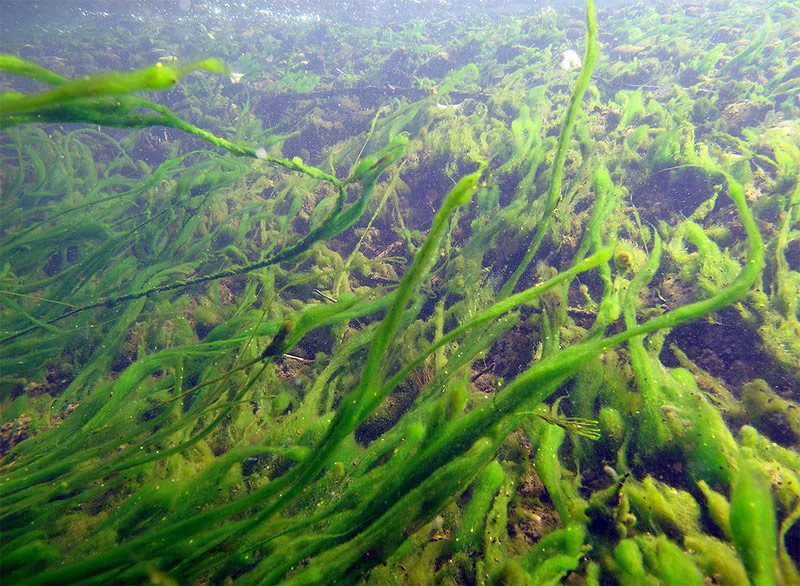Wednesday September 14, 2011
Water chemistry, flora, and fauna in streams can be greatly impacted by nutrient enrichment. Nutrient enrichment is often a result of excessive point and non-point source inputs of nutrients such as nitrogen (N) and phosphorus (P). The right balance of N & P is essential for maintaining natural biological communities in aquatic ecosystems. Primary producers, such as algae and macrophytes, fix carbon into stored energy, which is essential to productivity in a river ecosystem. However, if too much nutrient loading occurs, then streams can become impaired. According to the EPA, 30% of impaired streams are due to excessive nutrients (USEPA 2002). Nutrient enrichment causes excessive growth of primary producers which can lead to depletion of dissolved oxygen at night when photosynthesis stops and elevated respiration consumes dissolved oxygen. Excessive algae biomass, especially filamentous algae, is often an indicator of elevated nutrients. Nutrient enrichment can benefit fish due to increases in food availability when nutrient additions increase primary and secondary production. Enrichment of streams with naturally low levels of nutrients (oligotrophic) may result in increased algal biomass, increased benthic invertebrates, and fishes (Zheng and Paul in press).

